Theseus
Is That You?
To
a first-time visitor entering a Titan I site, the complex can indeed
appear very labyrinthine-- especially when you have no information
whatsoever about it. Such was the case when I arrived back in
the early '90's: I had no map, no drawings, sketches or directions-- no idea it was even a Titan
I. It would be fair to say I had no insight, no inkling and
no clue. I didn't know my elbow from an antenna silo.
We
had already circumvented some rudimentary measures to prevent entrance
to the complex: concrete
blocks and dirt in the
personnel entrance had actually aided in our infiltration and
we descended the long staircase to the bottom of the entry portal
without further obstacles.
After
marveling at the entry portal, we passed through the beckoning blast
doors into the complex proper; the foyer of the Titan I.
|
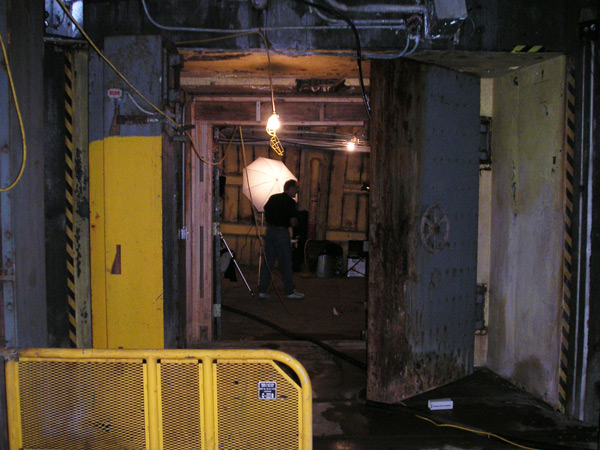
Lowry
724-C, August 2005: Looking
through the open blast doors at the bottom of the entry portal into
tunnel junction #10. Beyond lies the entire Titan 1 complex.
In
this photo, Army Corps. of Engineers photographer Harry Weddington can
be seen setting up a shot of the tunnel junction as part of the ACoE
effort to document the Titan 1 system for the National Archives.
Harry captured a series of large-format black and white photos for this
project.
At
the time this picture was taken, Harry was the last ACoE photographer
still in the field as the emphasis on documenting projects sadly seems
to have waned. Harry had worked as a photographer for the Corps
for many years documenting ACoE construction projects such as power
plants and dams and many other assignments in the US and abroad.
|
Actually, what
you see here is quite a bit different from what I saw that first
time. The pictures I took are of Lowry 724-C, but that first time
I was at Lowry 725-A. There are many differences between how
these two sites were salvaged and how each spent its post-operational
time. One difference between the two sites is readily apparent in
tunnel junction #10.
After
its closing in 1965, Lowry 724-C saw a sporadic presence of researchers
on site and inside the complex that continues to this day, though
only on the surface now. Ballistics and explosives testing were
carried out both above and below ground. Evidence of this work
remained at the site in the form of film canisters, roughed-in
electrical work, a retro-fitted facilities console outfitted with firing
controls, scattered papers covered with complex physics equations, and--
most striking of all-- thick steel plates with large holes blown through
them by some type of projectiles.
|
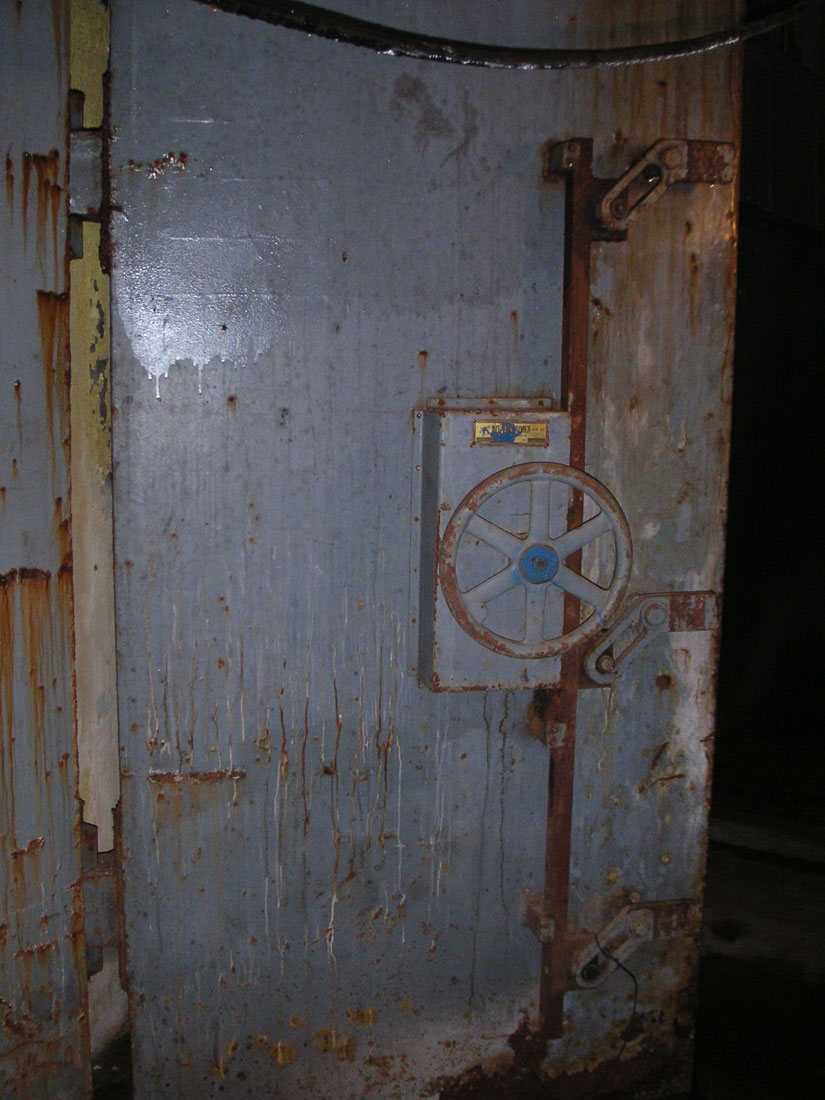
Lowry
724-C, August 2005: Looking from inside tunnel junction #10 toward the entry portal at one of
the 8 foot tall, 4 foot wide blast doors that protect the complex when
the portal silo doors were open. These doors were rendered useless at some point when the
locking mechanism was partially disassembled.
|
Lowry
725-A, like most of the other Colorado Titan I sites was initially
not sealed up,
or at least not very effectively, and before long a queue of the curious
and the bold either found a way inside or forced their way inside.
Looking around, it would seem that many were careful to bring along
their spray paint. Many it would seem, had something to say, and
say it they did using aerosolized paint from a can. Lowry
725-A suffers from a veritable plague of graffiti: vulgar, nonsensical,
topical, political, racist, confessions of love and hate, the
ever-present drug-culture iconography of marijuana, random cartoony
artwork and even condemnations of nuclear weapons.
Every
sort of statement can be seen on the walls of the 725-A complex-- voices of
the young and inquisitive visitors to the dead weapon system and the
thoughts foremost in their minds: peace, war, sex and the human
condition. Times never change.
Lowry
724-C was more protected from explorers, but not completely. There
were times when access to the site was easy and the signs are there,
proclaiming loudly of their passage, but far less often than other
sites.
Once
truly inside, I quickly became disoriented once we left the main
junction. There are few signs along the route and with this
first glimpse there was only mystery. I think we went down the
launcher tunnels first, or maybe the antenna tunnel. I cannot
recall exactly, but I do know I was quickly lost and utterly
bewildered.
|
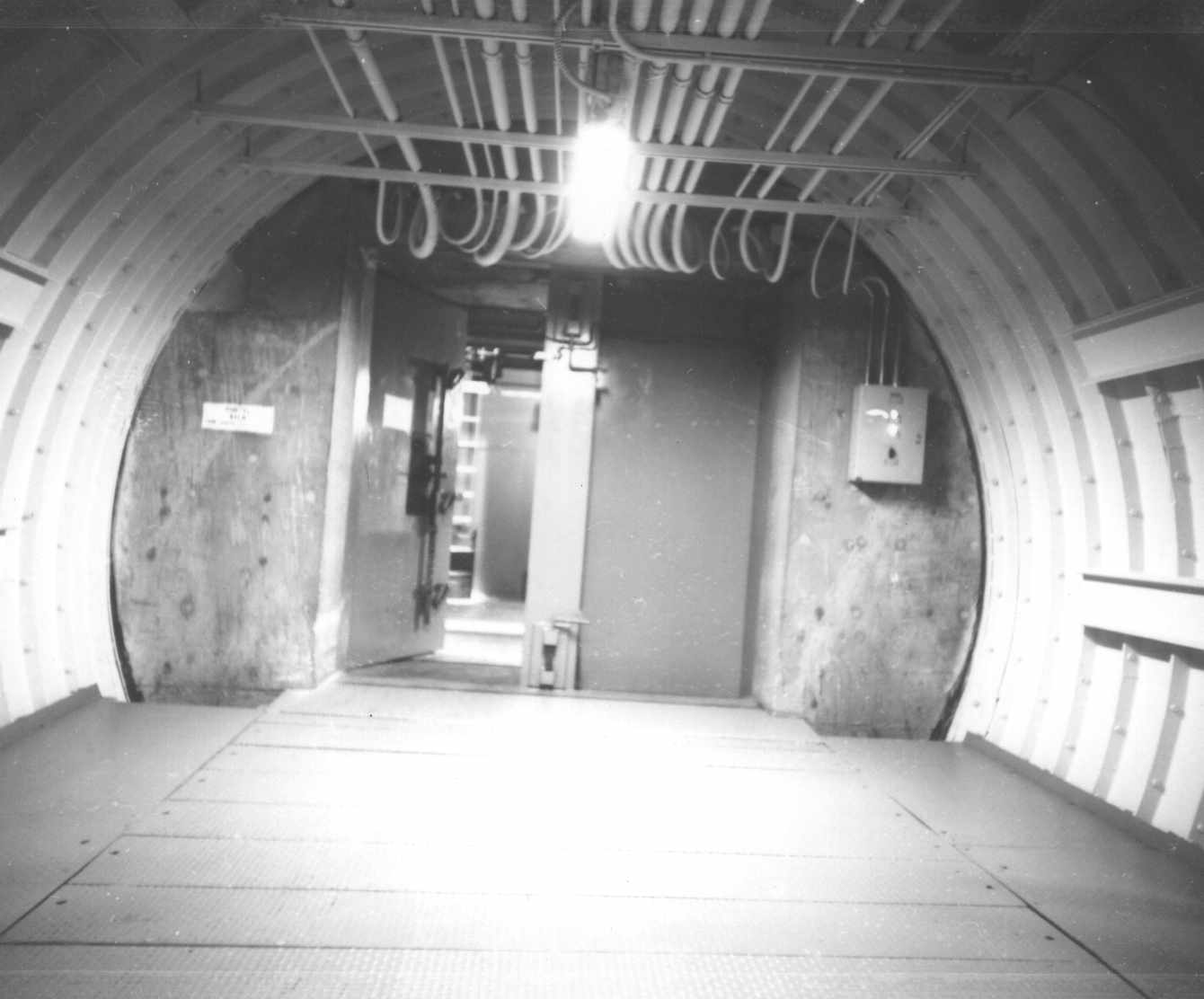
A
view from T.J. #10 looking towards the portal and the 8x8 foot entrance
and blast doors. These doors open outward and are heavily shored
with concrete and steel to make them incredibly resistant to being blown
inward by a blast.
Note the immaculate
appearance of the fresh, new site. The freight elevator is just
behind the blast doors. This photo also shows the removable floor
sections typical of the larger tunnel junctions. This is probably
the best this area ever looked. From this point on it was all
downhill.
Photo
courtesy of Fred Epler
|
|
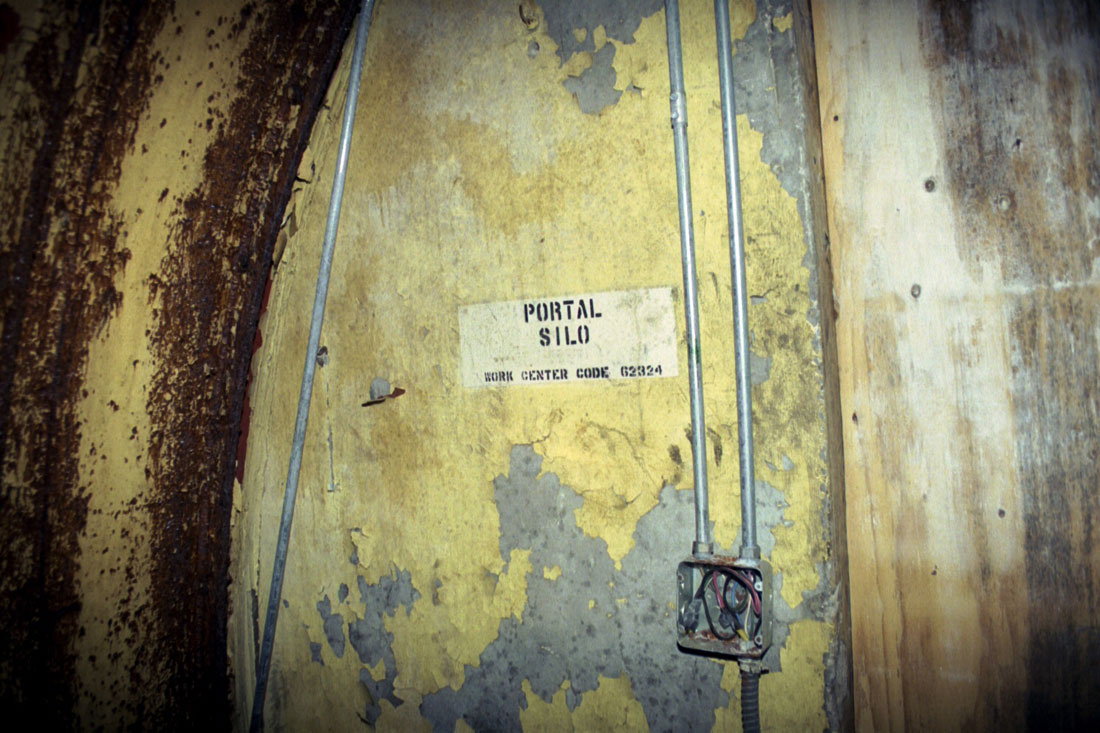
Lowry
724-C, 1999: Next to the portal silo blast doors. Yellow paint
gives in to the hands of time and post-operational conduit and
electrical work expands on the industrial theme of the complex.
|
Blundering
about in the dark we did our level best to guess at what we were
seeing, but we were often way off the mark. We thought that the the propellant terminals were
missile silos because we couldn't see the bottom through the water. Was it
2 feet deep, or 200? There was absolutely no way to tell without
going in there and I certainly wouldn't do anything that crazy would
I? (Yes, it turns out that I would, years later at a different
site.)
|
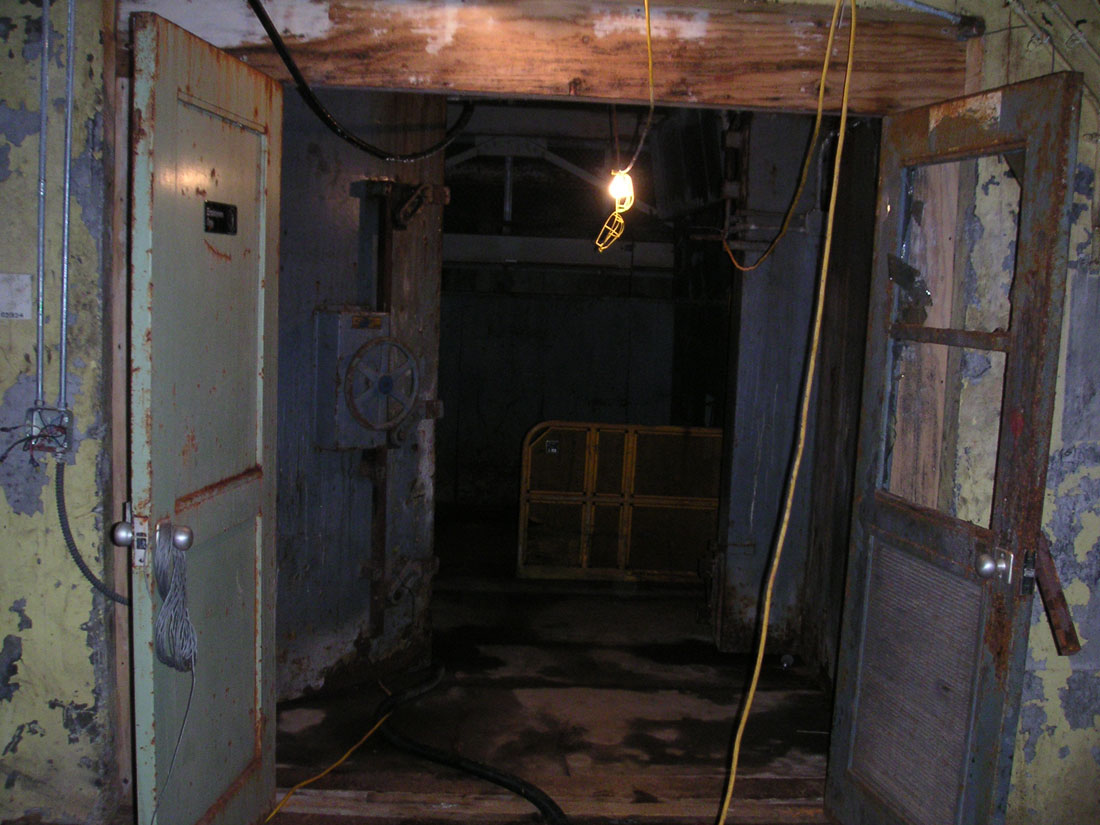
Lowry
724-C, August 2005: Another view looking from tunnel junction #10 into
the entry portal. You can see the yellow gate on the freight
elevator in the background. Past the blast doors you can also see
another set of doors that look very out of place and which are obviously
taken from somewhere else in the complex-- in this case from the control
center.
|
|
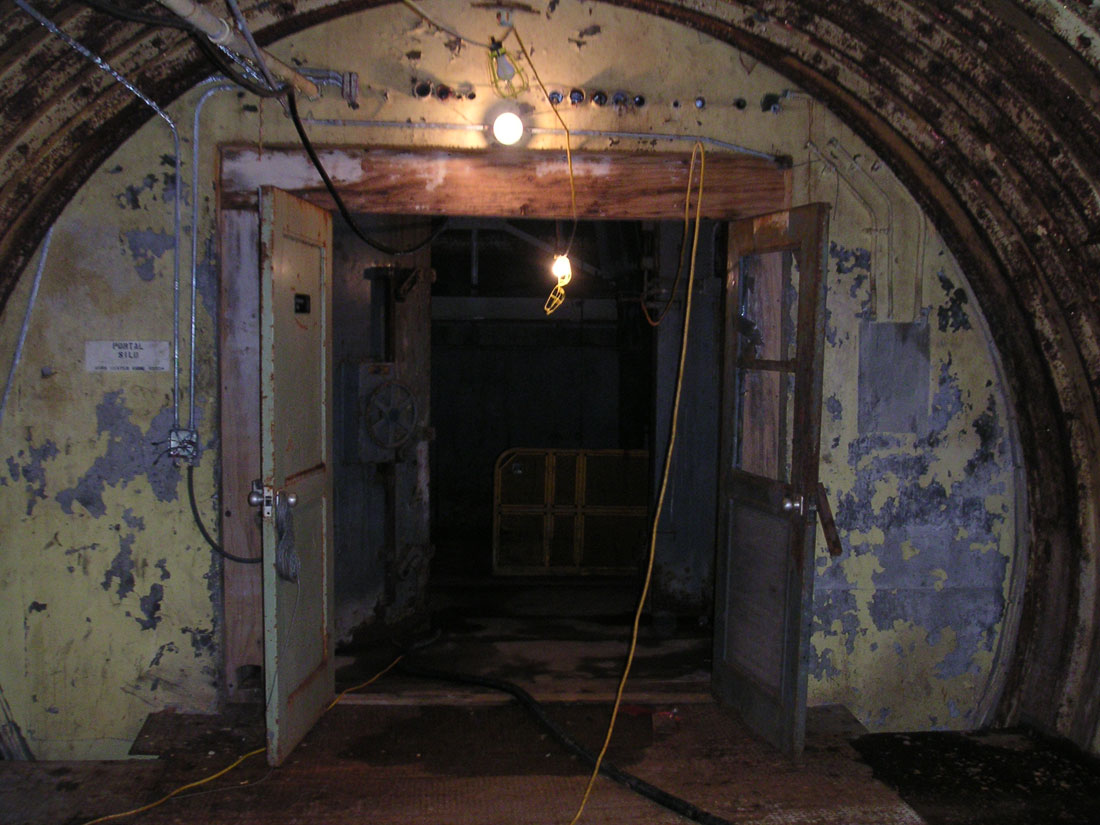
Lowry
724-C, August 2005: A
bit worse for wear, the 8'x8' opening from the portal here has been
fitted with a plywood doorjamb and ordinary office doors just beyond the
blast doors. This was done long after decommission and salvage,
presumably to prevent intrusion after the blast doors were rendered
inoperable. I doubt like hell they did much good.
Some
lighting had been restored in some areas as you can see here, but mostly
construction lighting was the only illumination outside TJ#10 and the
antenna tunnel.
|
|
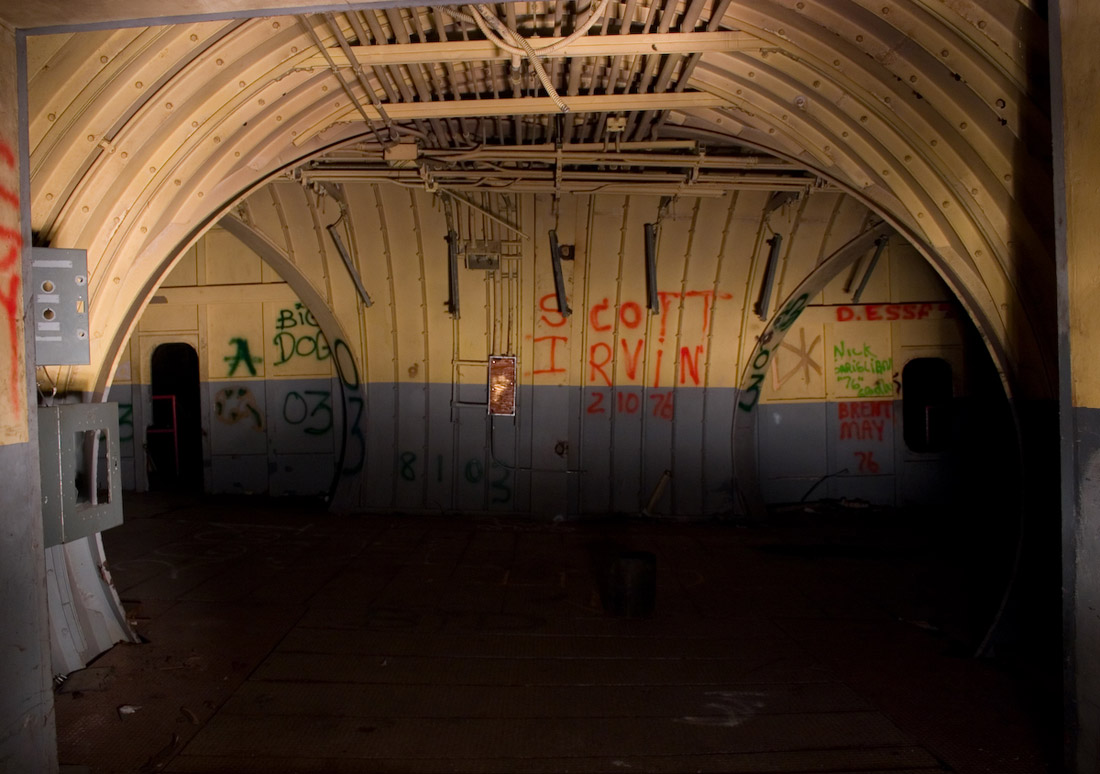
A
Beale Titan I site, circa 2007: A much-cleaner tunnel junction at one of
the 851st SMS sites in California. Shots of sites outside of
Colorado are a great study in comparative anatomy for me as a multitude
of structural and architectural differences jump out at me. Here
for instance, you can see 2 small dark openings in the back of the
tunnel. Each of these leads to one of the raw water tanks which at
Beale were housed behind a steel wall. Lowry sites had the tanks
exposed as you'll see in the photos later in this section.
Photo copyright of
Jonathan Haeber.
For
photos and more on missiles, history and architecture, visit his blog: Bearings.
|
Tunnels
led off in all directions going who knows where. Rust tinted the
walls, floor and even our shoes a pale red. Water could be heard
dripping somewhere in the distance and the strange odor we'd
encountered when we first entered was so strong and so pervasive that
it overpowered everything else.
We
breathed uneasily knowing that the place was full of asbestos and we
wore no masks or other protective gear. The thought that each
breath of the air down there brought us just a little closer to a
serious and potentially fatal pulmonary illness made me breathe more
shallowly and less often. I kept catching myself holding my
breath, often not noticing until my lungs burned urgently from
depravation.
|
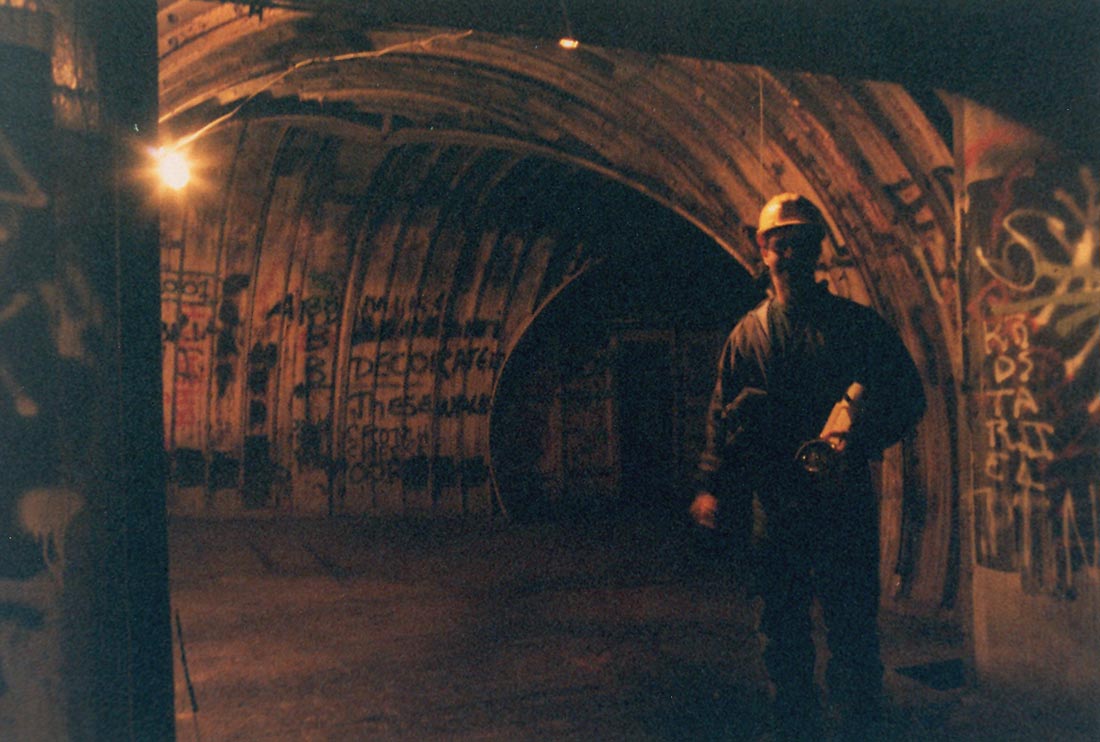
Larson
568-A: Peering through the portal blast doors into the gloomy vestibule
of TJ#10. You can see there's been a lot of traffic through this
site over the years, but aside from the graffiti it looks to be fairly
clean and in relatively good shape. It also has some meager
construction lighting routed down from the surface.
Looking
closely you can seen that like the Beale sites, the raw water tanks at
Larson were also tucked away behind a steel partition with a "Lolipop
Guild" access door/hatchway.
Photo
courtesy of Walter Silva
|
|
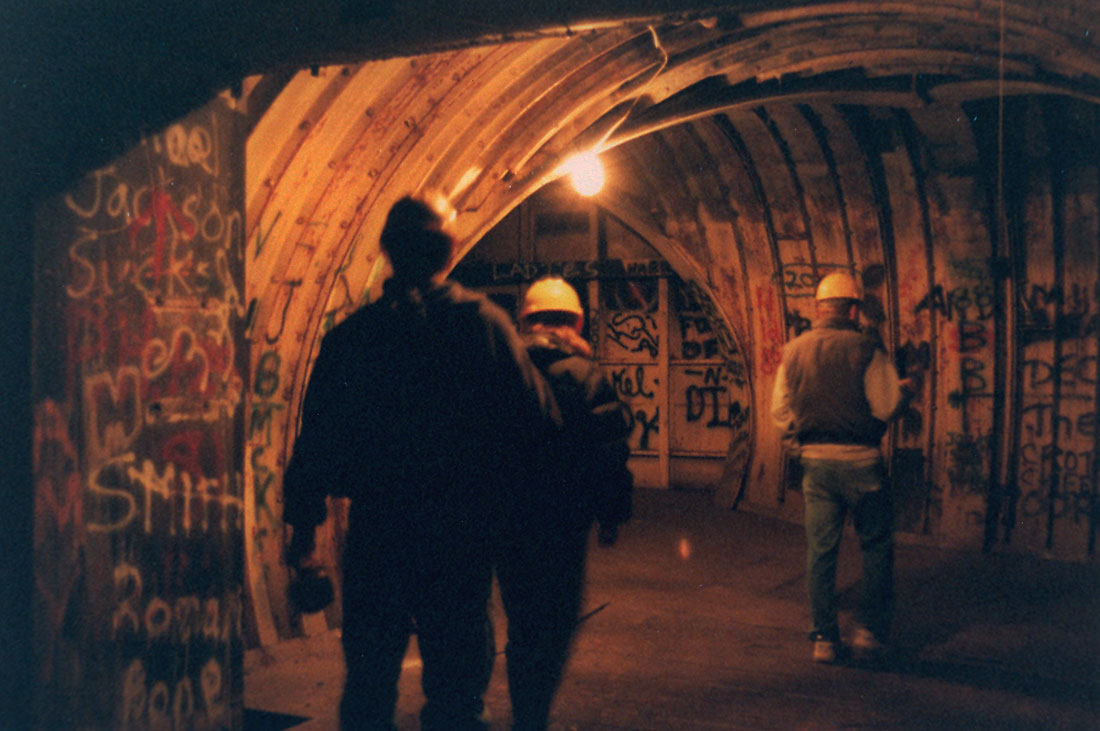
Larson
568-A: Another view of the entrance to TJ#10. The spray paint is
pretty bad at this site indicating that it was left open for many years.
Photo
courtesy of Walter Silva
|
Dark
as the tomb and often just as claustrophobic, the complex was a
completely alien environment inside with its curved metal walls and
industrial furnishings. Even familiar objects were strangely
altered to the site's purpose: light fixtures and pipes hung by
springs to protect them from shock. Not even the toilets were
spared and were mounted on rubber dampers and connected with flexible
plumbing.
|
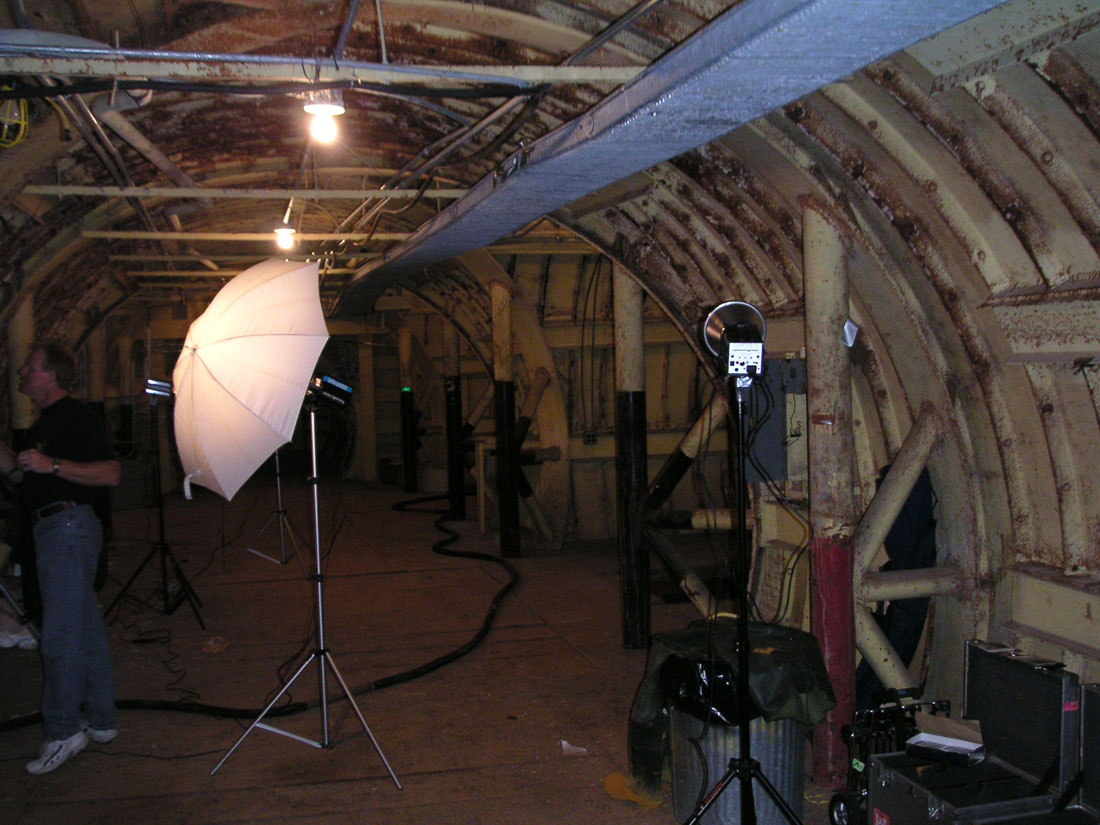
Lowry
724-C, August 2005: Army Corps. of Engineers photographer Harry
Weddington at work setting up a shot in tunnel junction #10.
Myself and another contractor spent the weekend assisting Harry with
power, lighting and the schlepping of equipment up and down the stairs
and into remote areas of the complex. I have fond memories of
balancing on narrow beams with both arms full trying to negotiate my way
down the dark launcher tunnels and over their treacherous gauntlet of
pipe supports and steelwork.
You
may have noticed that the web-like steel pipe supports prominent in this
and other photos at the Lowry sites are absent in the preceding 3 photos
of Beale and Larson. Perhaps the supports were done away with in
favor of additional external support on the yoke beams, stronger beams
or maybe the Lowry sites were found to be "over-engineered"
resulting in design changes at later sites? Whatever the reason,
these reinforcing structures appear to be peculiar to the Lowry 724th
and 725th sites.
|
|
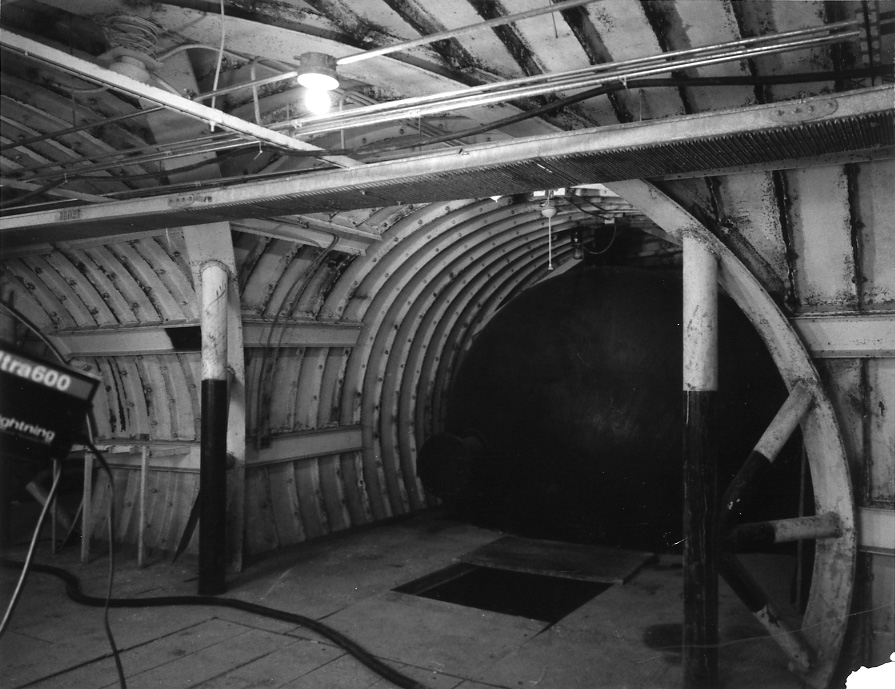
Lowry
724-C, August 2005: Still a work in progress, this is a quick proof
photo by Harry Weddington to check the set up for a large format
shot. This shows a nice shot of one of the raw water tanks nestled
in its bulkhead.
Photo
by Harry Weddington
|
It
quickly became obvious that the site had not been left simply abandoned
as though it had remained untouched since the airmen left decades
ago. Pieces of the complex were missing...
everywhere.
Everywhere
we looked we could see that salvage work had been done: piping was
removed, wiring reclaimed, steel flooring pulled up, beams and
supports cut and hauled away, insulation-- much of it asbestos-- was
torn loose and strewn about or piled up in corners. The further
into the site we went, the heavier the salvage seemed to become until
some areas seemed stripped to the bare tunnel walls.
|
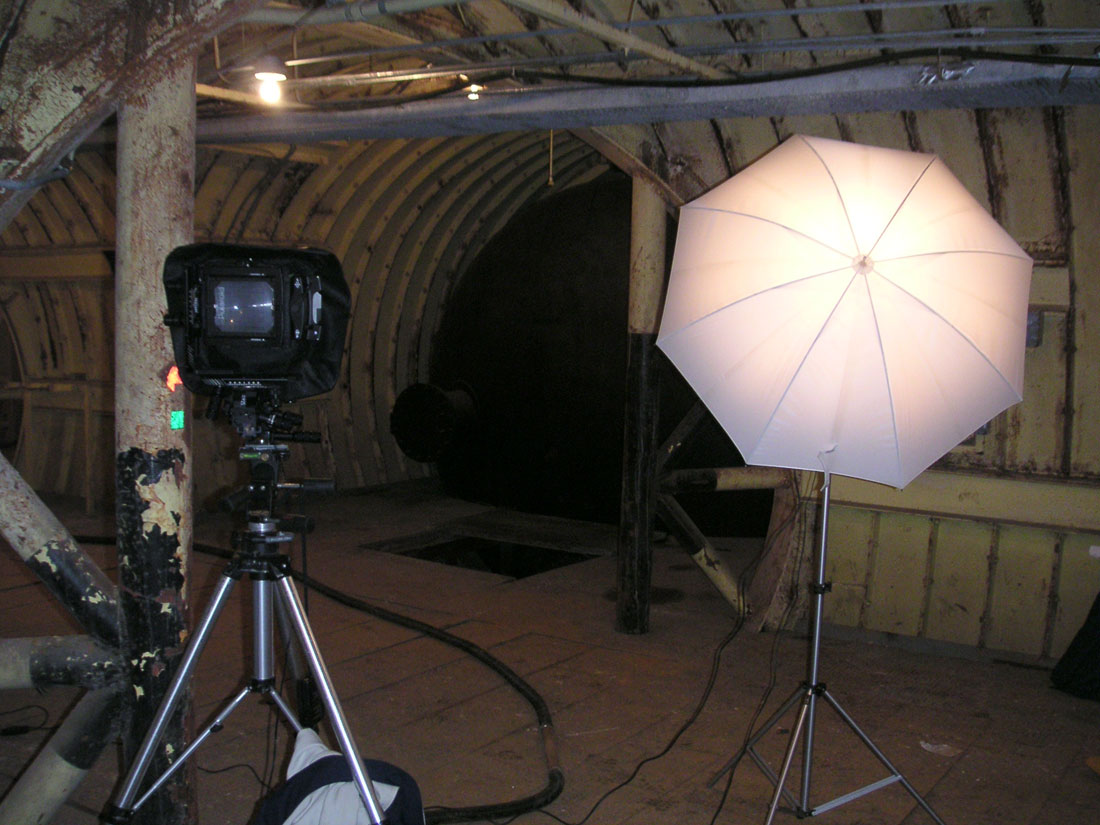
Lowry
724-C, August 2005: This is my photo of Harry's work in progress during
which he produced the previous image. The camera you see here
probably cost more than my car-- without the lenses, tripod and other
accoutrements! That camera has the accordion-style adjustment in
the front and a hood in the back to keep out light when checking the
view.
|
|
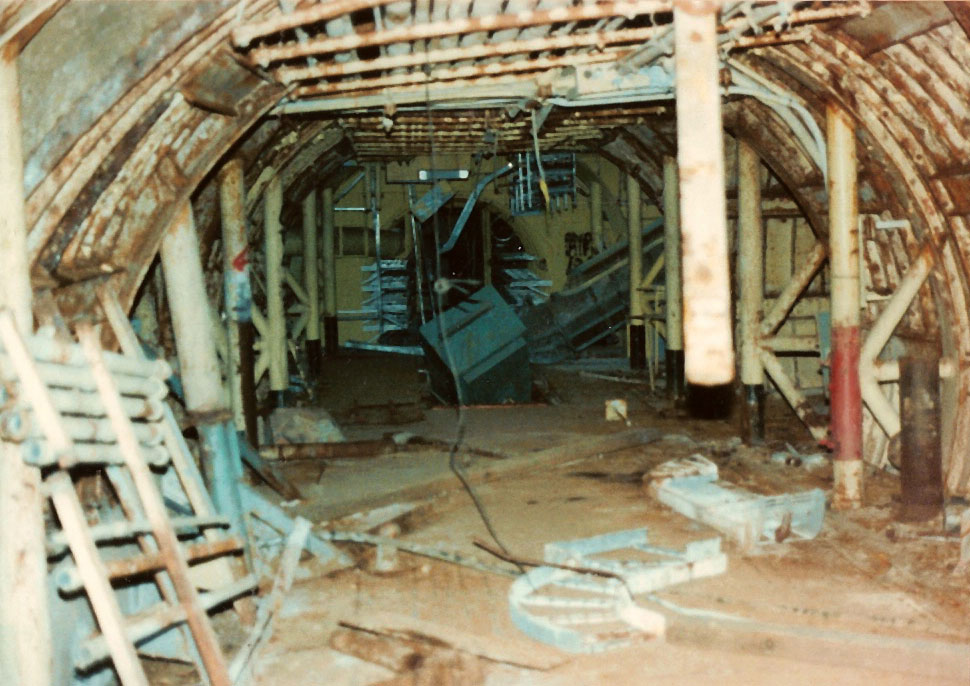
Lowry
724-A: Here's a great example of a thoroughly abused site. It
doesn't appear as though it was left open, but the salvage operations
appear to have been anything but delicate. It is a bit hard to
tell, but this is the view looking toward the control center.
You
can see sections of cable tray and electrical conduit laying all about
and there is a large green cabinet from either the antenna terminal or
the control center discarded in a large hole in the floor.
Everywhere there appears to be corrosion and damage. 724-C had a
lot of junk laying about in the main tunnel junction when I arrived, but
it was nowhere near as bad as what you see in this photo. What a
mess!
Photo
courtesy of Fred Epler
|
Apparently
the salvage operations at the 18 Titan 1 sites was anything but
uniform and I would later be told and there were reports of a site,
nearly pristine, all equipment still in place with no hint of a
scrapper that quickly flooded and had remained a watery tomb ever
since. Still others had most of the equipment left behind or the
gargantuan structure of the silo cribwork yet remained. After
seeing the stripped and tattered husks of 725-A and 724-C, it was
incredibly tantalizing to think that somewhere a site, untouched by
cutting torches or demolition workers might yet exist.
|
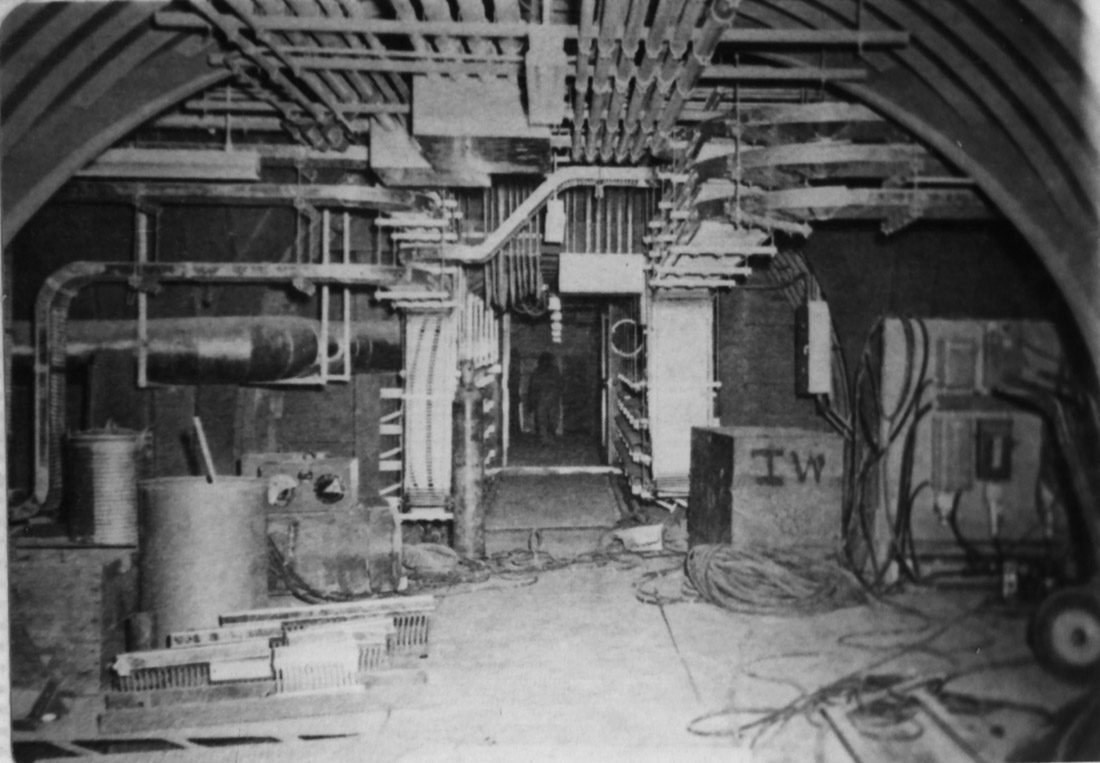
A
construction-era photo showing a view towards the Control
Center. There's a lot of activity still going on here as the
installation phase of construction progresses. I am not sure which
site is shown in this photo.
To the left is the tunnel to the antennas and on the right
(not visible) is the tunnel to the launchers. The
wooden box marked "IW" belongs to the Iron Workers union crew,
one of the trades that was "tapped out" at times by the sheer
scale of the Titan I project.
Photo
courtesy of Fred Epler
|
|
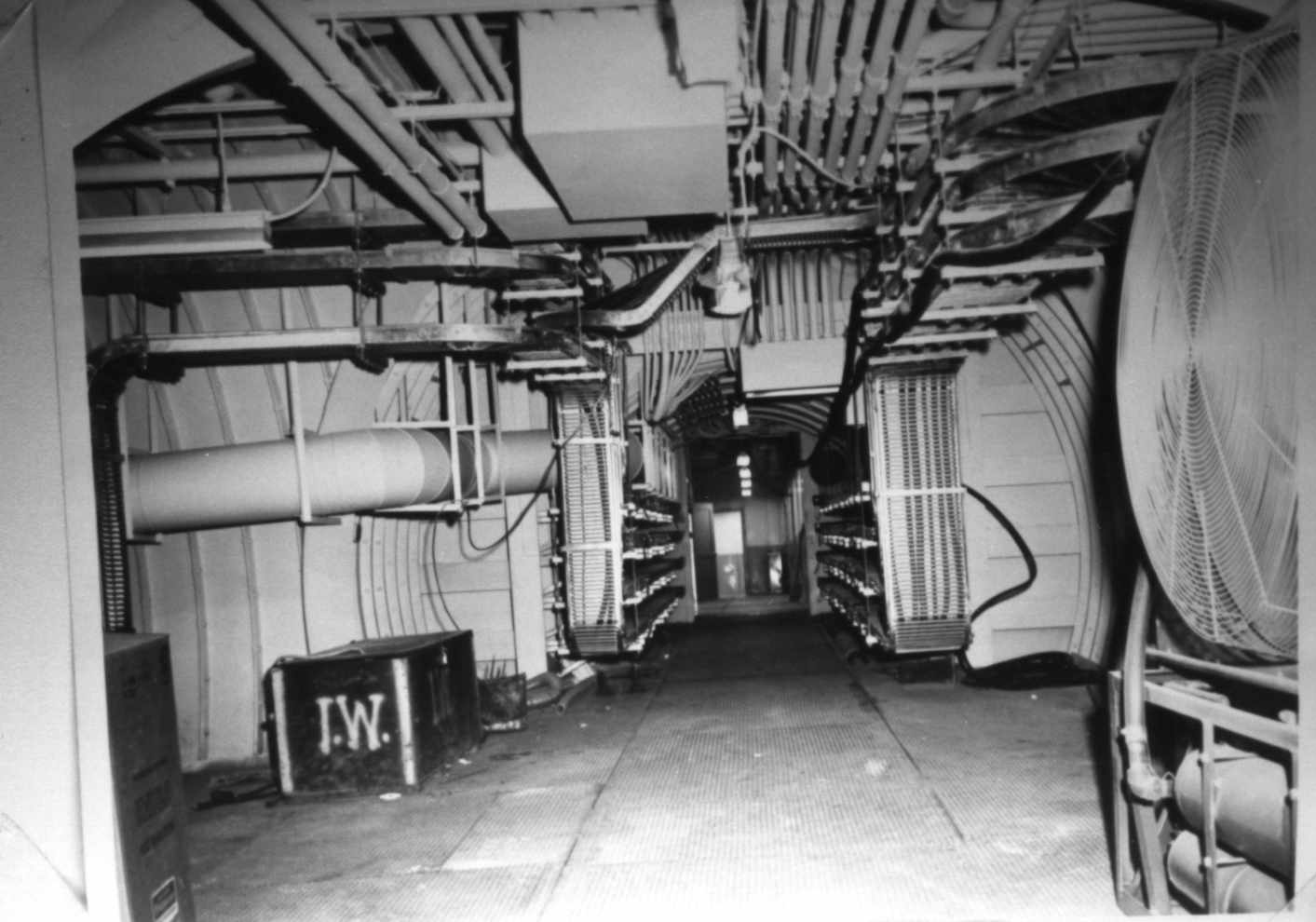
Another
unknown site: Construction photo showing a view towards the Control
Center. The large fan on the
right was most likely to draw air from or force air into the launcher
tunnel. Work looks to be a bit further along in this photo.
Another Iron Workers' tool box, apparently a standard fixture, can be
seen in this shot.
Photo
courtesy of Fred Epler
|
Slowly
the layout became more familiar to us as time and again we returned to
this main tunnel to explore another route and the unknown curiosities
it held. When we headed to the launchers however, we quickly
found the many twists and turns very disorienting. Each tunnel
looked the same as did the junctions connecting them. More than
once we had to follow a tunnel to its end just to see what was there
and then double back once we'd regained our bearings.
The
panic of being lost in the complex was always in the back of my
mind. What would you do if someone got hurt down there and you
couldn't quickly find the right way back out? There would be
almost no hope of getting someone out of there if they were
unconscious. You could try the fireman's
carry and you might make some
good distance that way, but there is no way anyone save Mr. Universe
is going to carry another adult human up those portal stairs without
help. Forget it!
|
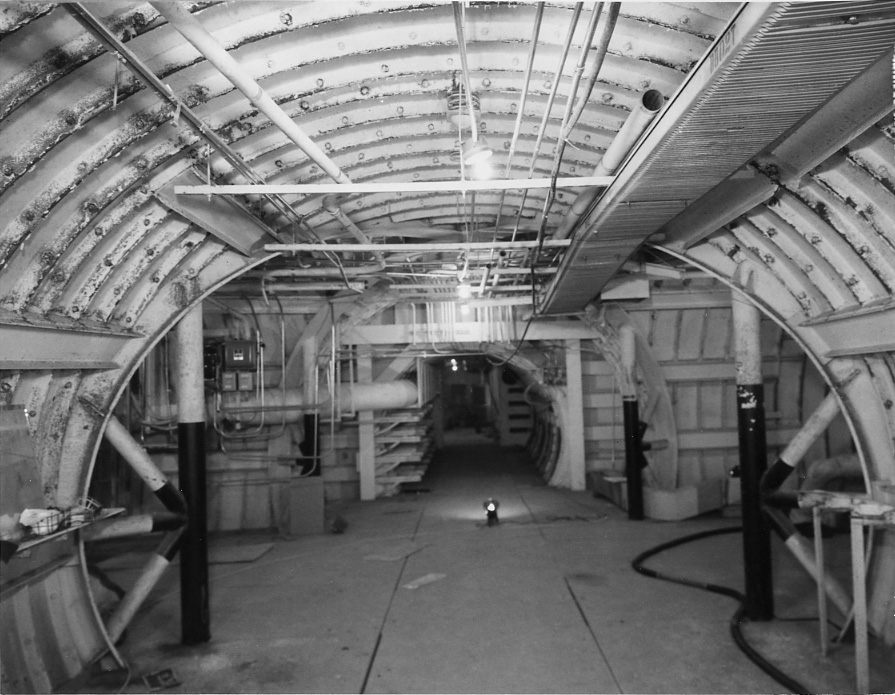
Lowry
724-C, August 2005: Another proof by Harry Weddington looking down the
tunnel junction toward the control center.
Photo
by Harry Weddington
|
|
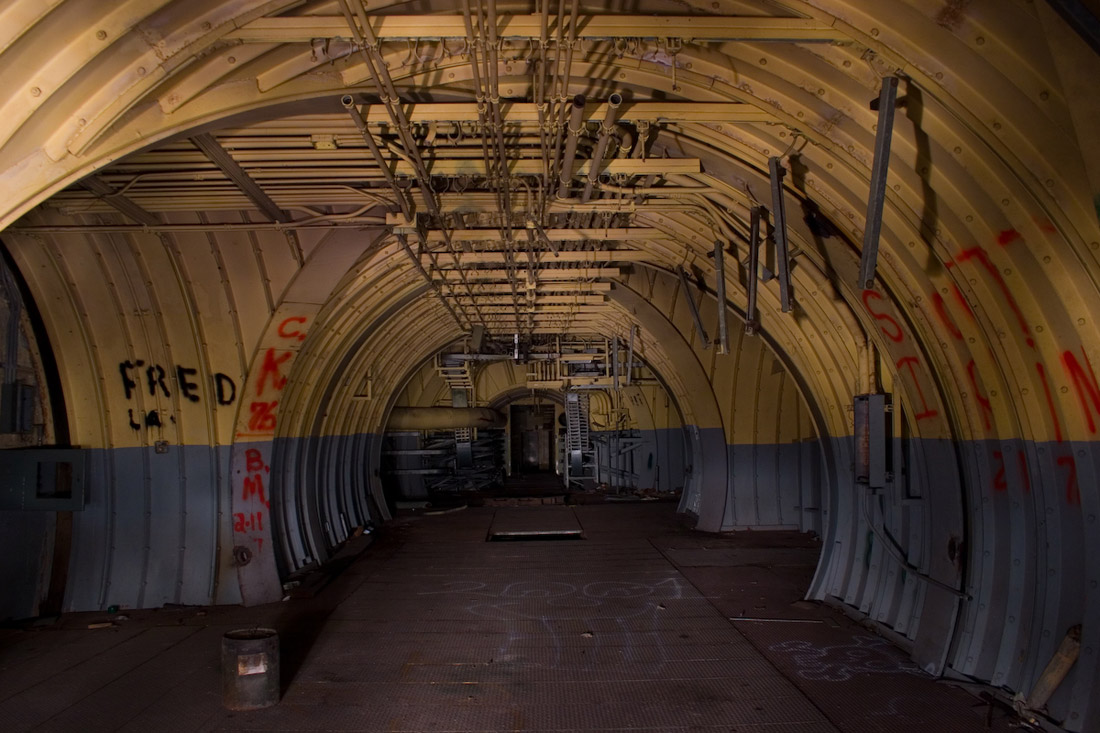
A
Beale Titan I site, circa 2007: Nearly the same view as the previous
photo to show the differences in construction and placement of
landmarks. Not much was left behind at this site as you can see,
however the paint is in excellent shape. Impressive!
Photo
copyright of Jonathan Haeber.
For
photos and more on missiles, history and architecture, visit his blog: Bearings.
|
After
a hour or two in a place as strange as a Titan 1 complex, your
fascination may well get the best of you and your tendency to worry
about the physical hazards such as tripping, slipping, falling,
hitting your head, and the invisible hazards like asbestos, lead,
arsenic, PCBs and other chemical bogeymen fades away and is replaced
with wonder.
Down
in the dark, my imagination ran wild inventing purpose for the things
I saw and personnel to operate the complex. The desire to really
see it as it was consumed me and the seeds of an obsession were
planted-- one that persists to this day and I doubt I'll ever shake.
Back
then I could have no idea that I would find myself in the Titans' lair
once again 6 years later, and I could never have foreseen the
improbable circumstances that would bring about such good
fortune. Nor could I guess that this web site could ever come to
be-- at least not by me that is.
|
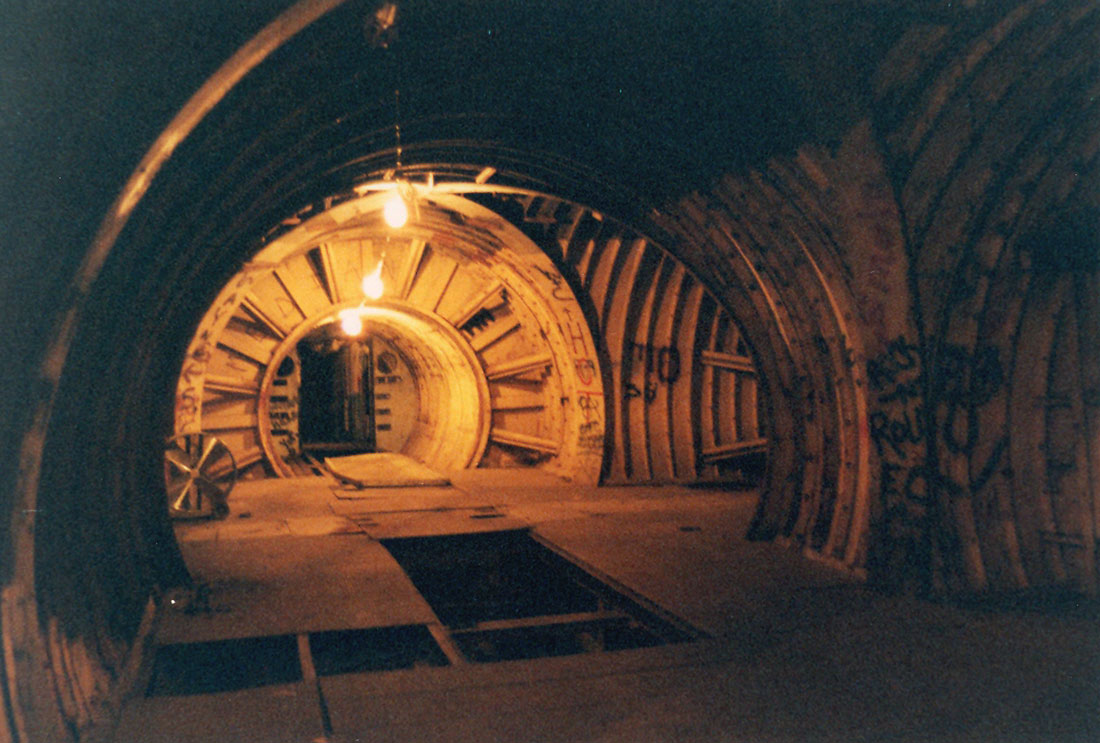
Larson
568-A: Another view toward the control center, but here you can see
another example of architectural diversity. The steelwork of the
tunnel junction where it meets the smaller tunnel into the control
center is completely different than that of the Lowry sites.
Instead of a horizontal construction, the steel radiates out from around
the opening. It is also surprising to note just how completely scoured
this particular site is (save for most of the floor). Take a look,
there's NOTHING LEFT in there!
Photo
courtesy of Walter Silva
|
The
next section further explores TJ#10 and the other branching tunnels
and where they go.
From
here you can continue to Main
Tunnel Junction Part III, or you can select another location from the map below or go the Main
Map:
Current
Location: Main Tunnel Junction (TJ #10) Part II
|
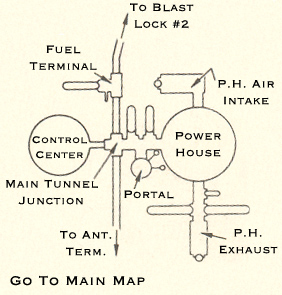
Where
would you like to go next?
|

|
Contact
| Site Map | Links |
Hosted by
InfoBunker






















